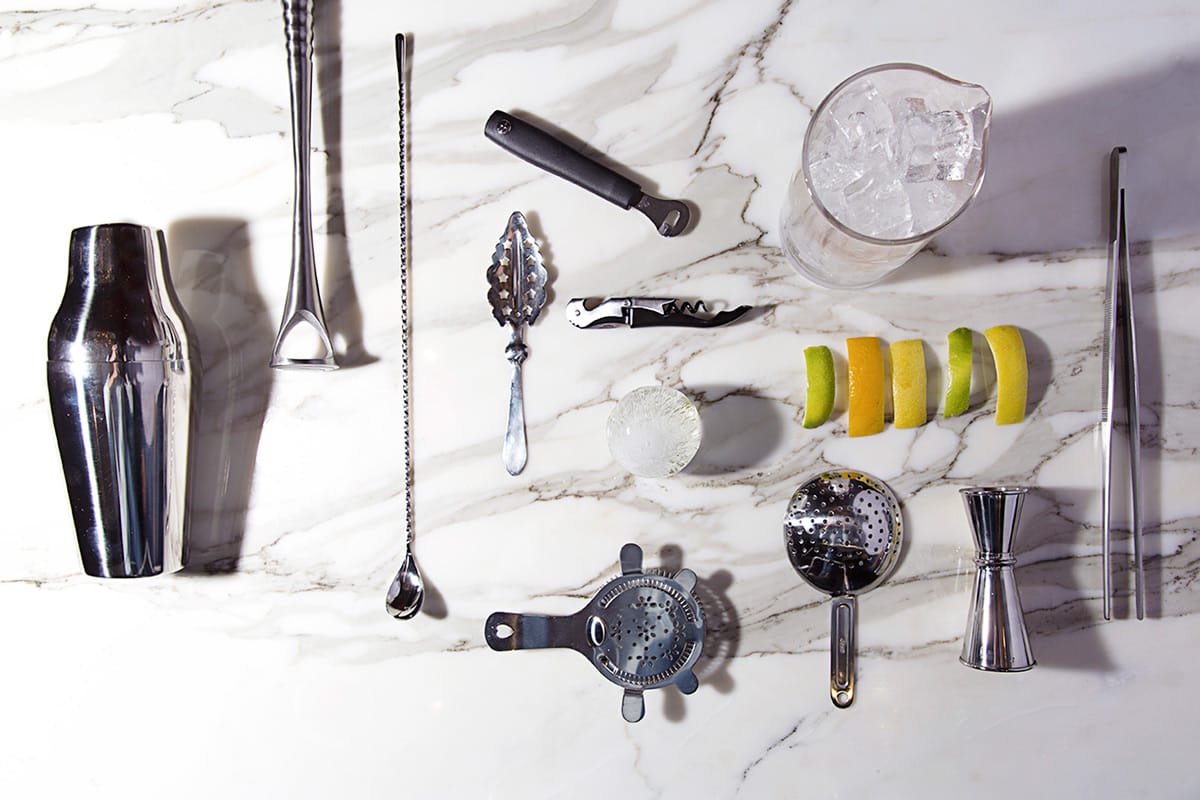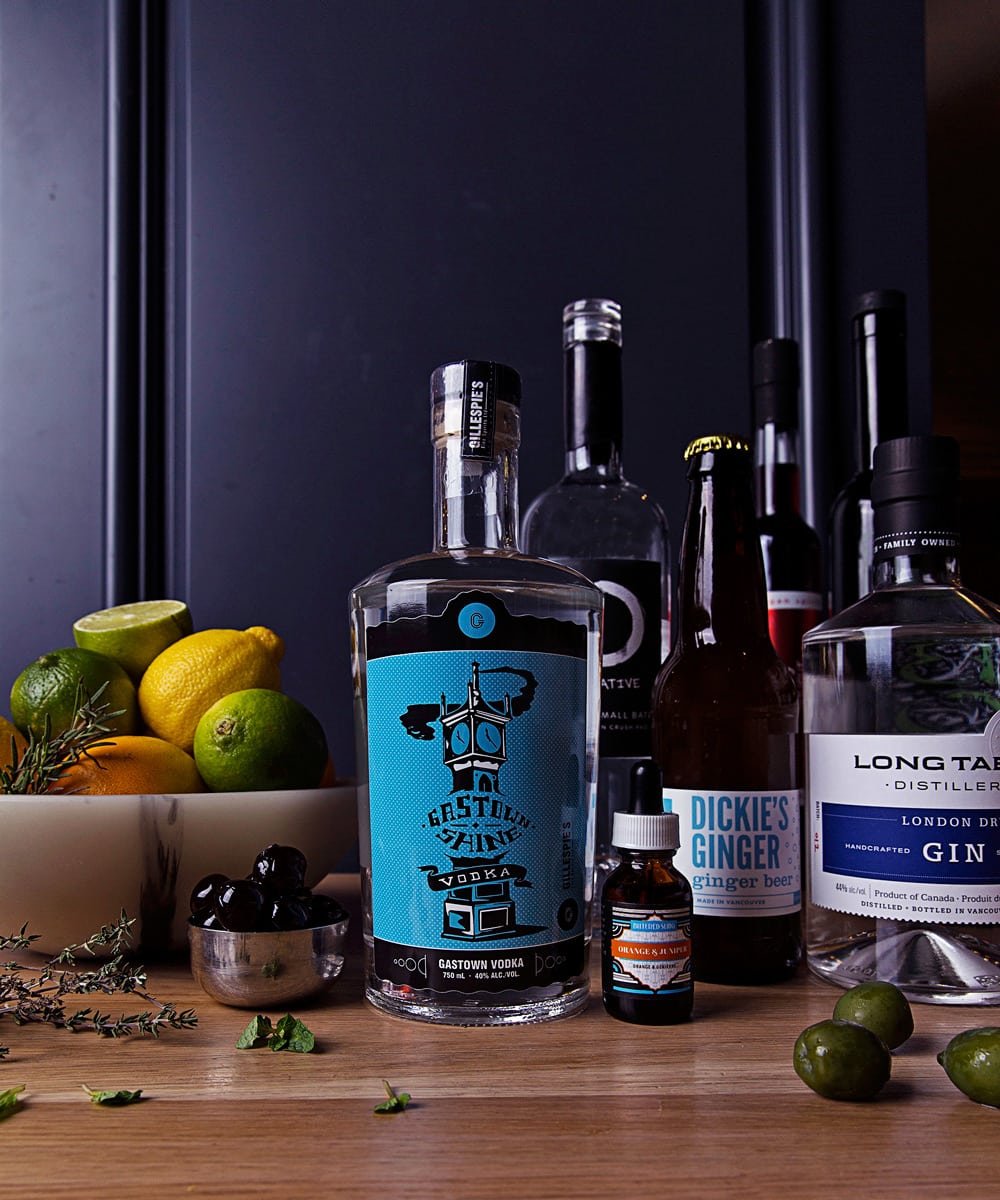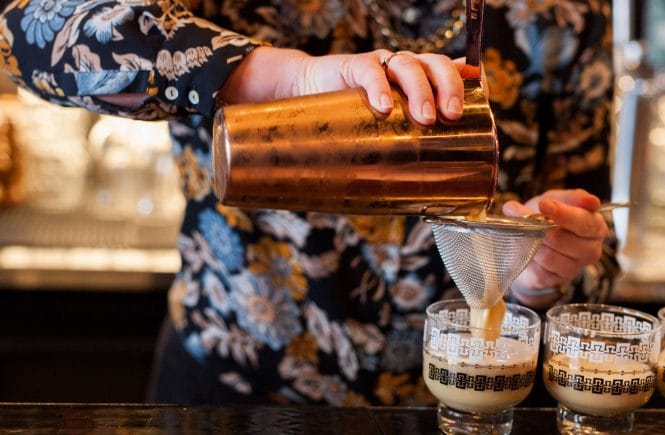All the ingredients and tools you need to begin serious bartending in the comfort of your own home

Ice: Ice is key to both the temperature and dilution of a drink. Use large, fresh cubes directly from the icebox when shaking or stirring. Ice that’s been out for too long—that is glossy and wet—will over-dilute your drinks, and fast! Invest in a few different shapes and sizes of ice moulds: over-sized, square, or even spherical moulds are great for spirits on the rocks.

Liquor: Basic spirits that should be found on any home bar: vodka, rum, gin, Scotch whisky, bourbon, rye, brandy and tequila. Take your time to research and invest in quality spirits, keeping in mind there is no need to overpay. You’ll also need a few liqueurs: I recommend Campari, Cointreau, and both sweet and dry Vermouth. Using quality ingredients will always affect the outcome of your drinks for the better.
Tools: To tend like a pro, you’ll want: a sharp paring knife, a cork and cap opener, a Japanese bar spoon, a jigger, a juice press, a Hawthorne strainer, a fine-mesh strainer, a muddler, a towel, and a Boston shaker. (See our glossary for definitions.)
Sweeteners: Start by making your own simple syrup: combine equal parts sugar and boiling water, and stir until the sugar is dissolved. Keep refrigerated. Feel free to experiment with different sugars, maple syrup, agave, honey, or even liqueurs.
Acid: Freshly squeezed lemons and limes add bite, freshness and complexity to many cocktails. Consider using other citrus fruit and berry juices as well. Just make sure they’re fresh—not from a bottle.
Like salt and pepper to a chef, bitters provide subtle but crucial seasoning to so many great drinks.
Bitters: Like salt and pepper to a chef, bitters provide subtle but crucial seasoning to so many great drinks. No home bar is complete without Angostura, Peychaud’s and orange bitters.
Garnish: Fresh limes, lemons and oranges are the most important garnishes, appearing in scores of cocktails. You should also source a good brandied or preserved cherry, olives, and cocktail onions.
Mixers: Single-serve portions of carbonated beverages are best for the home bar—no one likes a cocktail made with flat soda. The independent brands of tonic water, ginger beer, soda water and cola found in specialty supermarkets tend to come in smaller containers—and they taste better, too. I recommend Fentimans.
Glassware: Different cocktails require different types of glasses. You’ll need three different styles to get started: a stemmed Martini glass for stirred drinks served without ice, an Old Fashioned glass for cocktails and spirits that are served on the rocks, and a highball (or Collins) glass for cocktails that have either juice or soda added to them and tend to be lighter and more refreshing.
Reference Guides: A good book will help take your skills to the next level. The Bar Book: Elements of Cocktail Technique by Jeffrey Morgenthaler is the best on the market, and popular with professionals. It covers all the essentials in depth, and provides recipes for every occasion.
—by Justin Taylor




